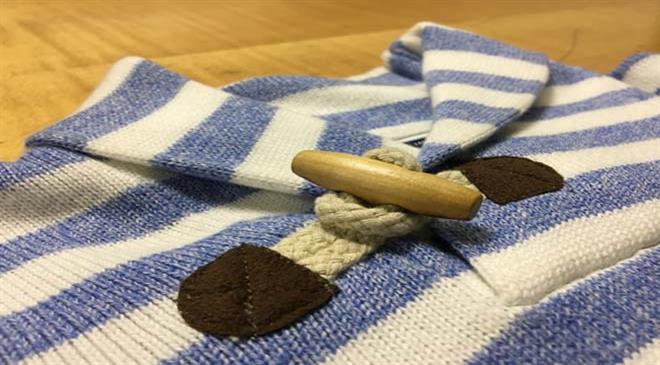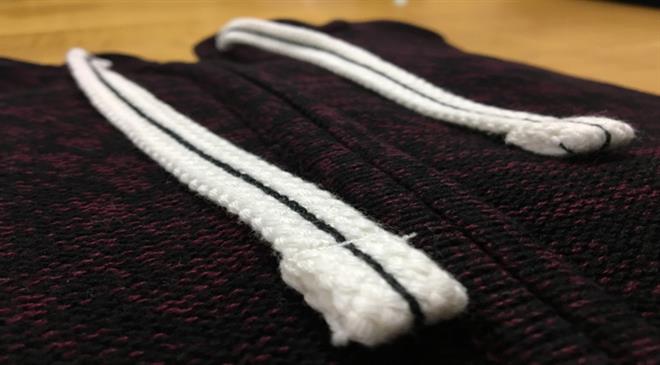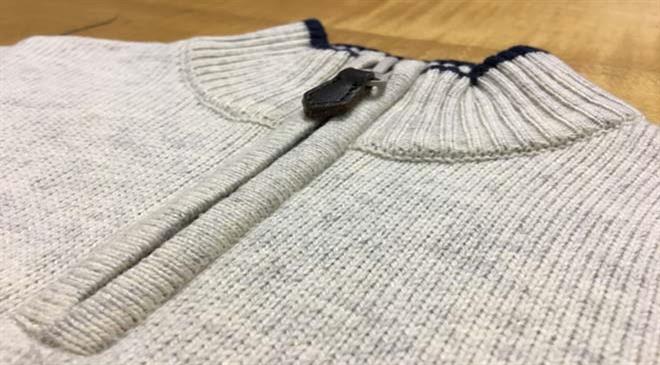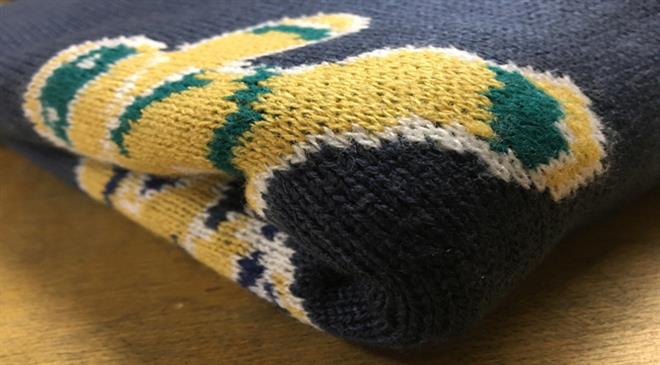Build a modern and vertically integrated 'Green Factory'
Sonia Group is a Bangladesh-based company operating in the Ready-Made Garments (RMG) sector. Originally established as a 'trading house' in 1998, the organisation has branched off into various related manufacturing processes pertaining to the knit composite industry, with each business entity catering to specific needs of international retail markets. Fibre2Fashion spoke to Md Ehsanuddin Khan, COO, Sonia Group, about the company's current size and production capacity, its long-term vision and goals.
What is your current company size in terms of people and manufacturing units? What are your strengths as a company?
We are primarily a knitwear designing and manufacturing company with our own production facilities. We are manufacturing knitwear collections comprising of sweaters, pullovers, cardigans, vests, shawls, t-shirts, polo-shirts, sweatshirts, tank-tops, etc.
Over the years, we have been building on our production capabilities aimed at servicing brands and retailers at varying price points, as well as offering a comprehensive product development ecosystem to different private labels. By focusing on creating collections that take into consideration functionality and aesthetics alike, we have been building on our core expertise in incorporating detailed workmanship, knitting and sewing techniques, special washes/finishes, and different embellishments and prints into the end products we are manufacturing.
Currently, we are operating out of 3 manufacturing companies (Sonia & Sweaters Limited, Sonia Fine Knit Limited & Naba Knit Composite Limited) with a total workforce of approximately 3389 employees.
According to you, which are the major issues brands should focus on to strengthen the RMG sector of Bangladesh?
Strengthening Bangladesh's RMG sector is a proposition whose foundation is grounded in the endeavours that we as industry participants are willing to pursue into the foreseeable future. The quality of the fashion products we are able to design and develop ultimately plays a big role in determining how we are able to collaborate with fashion brands. To this end, product development capabilities, product diversification strategies, and improvements in overall efficiency are critical factors for us as industry participants.
To position ourselves as creative fashion manufacturers, we must focus and invest in product development as a cornerstone of our business platform. Fashion designers representing brands are constantly looking to work with companies that are becoming increasingly design-driven, with the ability on the manufacturers' part to offer product re-engineering to attain price and value fit becoming integral to the understanding between the stakeholders in consideration. In this regard, fashion manufacturers should be willing to invest into R&D with a viewpoint of being able to service brands with innovative designs and concepts, and the culmination of these efforts would possibly allow for better technical collaboration prospects with the end decision-makers.
Product diversification should be another major focus area, for many manufacturers have been positioned too narrowly into a few product segments, and unless there is an initiative in exploring different machinery setup and expertise development needed to manufacture different product categories, many manufacturers will struggle to carry their respective businesses into the long-term horizon without offering their customers a versatile manufacturing approach. Transitioning to different product segments that require more versatility in machine and production layouts require a willingness on the manufacturers' part to take a certain amount of risk, without which enhanced value-addition based products cannot be attained.
From an efficiency perspective, though there have been gains across the industry in terms of improvements in workers' technical efficiency over the past decade, most manufacturers will still realise that we are quite far from the efficiency benchmarks we really should have attained by now. There is still tremendous room in terms of deploying meaningful and sustainable technical training required to raise the quality standards of our manufacturing. Manufacturers who are able to create cleaner manufacturing ecosystems and put in place mechanisms for better resource consumption and waste management, would also be positioning themselves as better long-term manufacturers of sustainable fashion.

What are the current situations plaguing Bangladesh's RMG industry? What is the government doing about it?
Taking a conservative stance on the current situations that are placing great strains on our industry at large, it would be an understatement to claim that these are indeed extremely challenging times for a predominant portion of the sector. In the recently concluded year, 63 Bangladesh Garments Manufacturers and Exporters Association (BGMEA) and 70 Bangladesh Knitwear Manufacturers and Exporters Association (BKMEA) member factories were shut down, rendering around 62,583 workers jobless.
At the heart of the situation lies several, interrelated factors that combinedly, have led to this point. Against the backdrop of a stagnant global economy that has led to declining apparel prices and downward pressure on unit cost prices, Bangladeshi garment manufacturers find themselves losing competitiveness owing to rising production costs attributable to the implementation of a new wage structure as well as other cost components including electricity, gas, and bank interest rates.
Many factories placed in the small to medium-size categories could not secure the banking support they needed to improve their compliance requirements, and several others struggled with securing enough work orders to keep their operations running. Furthermore, we have now reached a point where the industry is suffering from over-capacity, as for the past several years, a predominant segment of our industry have been mostly focusing on a narrow range of basic staple products that make up the bulk of our exports. Hence, with most factories competing in this very saturated space, the primary competing factor for most of us has been the prices we are able to offer our customers.
The government has been working closely with the industry participants in an effort to provide different stimulus and incentive packages that it deems could provide a certain level of relief to garments exporters. In addition to the export incentives available to manufacturers for exports to the traditional markets, the government has been promoting a higher cash incentive bracket for exports to what it considers non-traditional or new markets. The apparel industry is also being fully exempted of VAT on bills for utility consumption, including gas, electricity and water.
The government has also made special tax provisions for industry participants who have set up eco-friendly manufacturing operations eligible for Green Building certification by internationally accredited certification agencies, such as the United States Green Building Council (USGBC).
Where do you source your raw materials from?
As a manufacturing company working with a wide range of global fashion companies, we too have to rely on a global supply chain for assimilating several raw material components as required for production. Having said that, we source most of our raw materials from China and Hong Kong. In fact, as a specialist sweater manufacturing company, we develop many collections based on multi-fibre blended yarns which are developed and sourced primarily from China. Alternatively, we also work with other raw material suppliers based in places such as Italy and India, and also source different embellishment and trims items from suppliers based in countries such as Vietnam and Cambodia.
What is the monthly and annual production capacity of your ready-made garments? What is the share of sweaters in that? At what rate is the production growing year-on-year?
Our monthly production capacities allow for approximately 500,000 units of sweaters-related items, and another 200,000 units of circular-knitwear including items such as t-shirts, polo-shirts, sweatshirts, etc. On an annual basis, this roughly translates to about 6 million sweaters and 2.4 million units of circular knitwear.
Production capacity augmentation has been a gradual process for us over the past 5 years, especially as it relates to our sweater-manufacturing operations. With the assimilation of computerised knitting machines into our manufacturing value-chain, we have been experiencing annual production growth rates between 12-15 per cent.

Do you plan to expand your production capacity or introduce new products? Please share a few details about your future plans.
As a medium-sized organisation with more than two decades of operations, our management has traditionally been quite conservative as it relates to our production capacities as well as the range of products we have been manufacturing. One of the core aspects of our marketing strategy has been to be able to work in close cooperation with the kinds of fashion brands who envision the kind of fashion collections that we feel personally invested in. To that end, we have made a conscious decision to keep our production capacities at a range where we can work with smaller MOQ's (minimum order quantities) and have the flexibility to focus on integrating different fabrics, yarns and embellishment techniques into the products we manufacture.
We had a target to transition into an automated knitting ecosystem for our sweater factories, and over the course of the past 5 years, we have attained our initial target. The focus for the next few years is to be able to optimise the existing production capacities and to focus on integrating further value-addition sewing and knitting techniques into our capability matrix. We feel that our existing capacities are more or less at the level it needs to be for an organisation of our size, keeping in consideration the product propositions we are focusing on.
As far as new products are concerned, focusing on mixed-media garment items remain our primary area of focus for the immediate future. We are still lagging behind in having a very strong research & development team to take us to the next level of product expertise and exposure, and that remains one of our key ambitions with an eye on the future. For several years, we have focused on developing core expertise in areas such as the application of machine washable knitwear in luxury yarns such as pure merino wool and different wool blends. We have not yet attained this expertise to the level that we would have liked and remain committed to working on these aspects of technical applications.
Another ambitious inclination of ours for the longer-term horizon is a vision to build a modern and vertically integrated 'Green Factory'. As we take the steps towards incorporating eco-friendly manufacturing practices across our factories, such a step becomes integral to the long-term survival prospects for an organization which is two decades into its learning curve. Along with a project of this nature, we would be considering product categories and specialties that we are currently unable to accommodate within our existing ecosystem. (PC)

Which countries are you exporting to?
Our manufacturing operations have been set up exclusively for export-oriented purposes, and hence, our entire sales revenues are generated by our exports to different countries. Primarily, we work with retailers and brands based out of North America (US & Canada) and Europe (United Kingdom, Germany, France, Sweden, Denmark).
How much quantity of your RMG products is consumed in the domestic market versus exported outside?
As mentioned already, we are a 100 per cent export-oriented company, and as such, none of our manufactured products are consumed in the domestic market.
What kind of innovations are you trying to bring into your garment business? Any upgradations you have brought into your current lot of machinery to suit demands of the international market?
The primary focus for our management as it relates to innovations in the workplace, is to be able to engage our employees to embrace new ideas for improving upon our existing working methodologies. On the machinery front, we have made considerable investments in technologies that have been instrumental in enabling us to develop our core competencies. We have transitioned from manual knitting to computerised knitting systems, which allows for auto-knit shaped panels and been a game-changer for the industry at large. We have invested in upgraded linking technology and machines which are giving our workers better efficiency scope while also contributing to lower energy consumption. From a traditional "Make Through System", we have re-engineered our linking operations layout to a "Line System" which has provided us with a more real-time line balancing tool for allocating different job components to different line operations.
In addition to the transitioning to computerised knitting technologies, we have also assimilated into our designing ecosystem an apparel designing system designed by Japanese technology company Shima Seiki that serves as an all-in-one 3D Design system that supports different stages of manufacturing from concept to design and enables virtual sampling and simulation for a better fashion concept development.

How do you keep a track of market trends and other related information?
In terms of keeping abreast of market trends and other related information as it relates to our manufacturing value chain, we typically try to remain engaged with our raw material suppliers as well as other industry participants to know the direction of the trends as far as supply forecasts and prices of raw materials are concerned. We try to participate in industry seminars and often attend international trade shows and sourcing fairs to collect information on the emerging fashion trends. Over the past few years, we have had our management team members as well as core operational teams visit different yarn/fabric/textile machinery expositions for gathering market data and insights into a wide range of subject matters relevant to our business.
Consumers today are increasingly looking for sustainable garments. As a company how are you achieving your sustainability goals?
Sustainable fashion has become more than just a buzzword in our interactions with the global fashion industry participants. The need to be able to offer fashion products that can be viewed as sustainable garments has also influenced us in shaping our own sustainability goals. Part of that translates onto our ecological responsibility, where we try to do our bit in protecting the environment and taking necessary measures in dealing with our actions as a company that relate to environmental degradation.
Increasingly, we are asking our raw materials suppliers for cotton yarns which are being produced in collaboration with The Better Cotton Initiative (BCI), the largest cotton sustainability programme in the world.
We are working hard in developing our expertise in the field of organic production, creating more earth-conscious fashion collections made of organically grown materials, such as Organic Cotton, which is grown using responsible methods and materials that have a low impact on the environment. To strengthen our exposure and expertise in producing with such materials, we are adhering to the testing criteria of a few internationally recognised standards, including The Global Organic Textile Standard (GOTS) and The Organic Cotton Standard (OCS).
In addition to the use of organic materials, many of the brands we work with have also helped us in developing fashion collections using materials such as Recycled Cotton and Recycled Polyester. Recycled Cotton yarns are manufactured with cotton recycled and waste fabrics, and Recycled Polyester is made from recycled materials (PET and polyester fabrics). To verify the recycled content of our products, we have been adhering to the products standards requirements set forth by The Global Recycle Standard (GRS) and The Recycled Claim Standard (RCS).
Over the past few years, we have committed to manufacturing garments that are completely free of harmful substances in an effort to create a manufacturing ecosystem that places the highest priority on ensuring product safety. To this end, our products meet the testing and certification process of the renowned Oeko-Tex Standard 100, which is one of the world's best-known labels that ensures that every component of a garment has been tested and found to be safe in human ecological terms.
To address the use of industrial-grade chemicals in our manufacturing stages, we have taken an initiative in building and operating an Effluent Treatment Plant (ETP) designed to support our endeavors towards purifying industrial wastewater for re-use. There has also been a step towards adopting improved chemical management practices at all layers of our operations.





